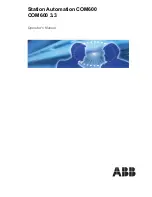
•
The slash between values is required as part of the notation.
•
The following list describes the components of the notation:
◦
rack
—
Chassis number of the rack.
◦
slot
—
Physical slot number of the line card.
◦
module
—
Module number or subslot (for a SPA). A physical layer interface module (PLIM) is
always 0.
◦
port
—
Physical port number of the interface.
◦
T3num
—
T3 controller number.
◦
T1num
—
T1 controller number.
•
If specifying a virtual interface, the number range varies, depending on interface type.
•
When specifying a virtual tributary group, the naming notation is
rack
/
slot
/
module
/
port
/
vtg
/
vt
. The slash
between values is required as part of the notation. An explanation of each component of the naming
notation is as follows:
◦
rack
—
Chassis number of the rack.
◦
slot
—
Physical slot number of the line card.
◦
module
—
Module number or subslot (for a SPA). A physical layer interface module (PLIM) is
always 0.
◦
port
—
Physical port number of the interface.
◦
vtg
—
Virtual tributary group.
◦
vt
—
Virtual tributary instance.
Task ID
Operations
Task ID
read
interface
Examples
The following example shows sample output from the
show controllers t1
command with the
brief
keyword
for a single T1 channel:
RP/0/RSP0/CPU0:router#
show controllers t1 0/4/2/0/1 brief
T1 0/4/2/0/1 is up
mode: ATM
timeslots: 1-24
FDL per AT&T 54016 spec.
Receiver has no alarms.
Framing is ESF, Line Code is B8ZS, Clock Source is internal
Alarm Soaking Interval:
Alarm Declaring= 2500 msec
Alarm clearing = 10000 msec
Bert Test on controller port : T1 0/4/2/0/1
BERT test result (not running)
Cisco ASR 9000 Series Aggregation Services Router Interface and Hardware Component Command Reference,
Release 5.3.x
1047
T3, E3, T1, E1 Controller Commands on the Cisco ASR 9000 Series Router
show controllers t1
















































